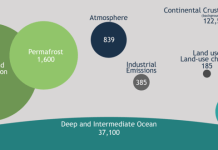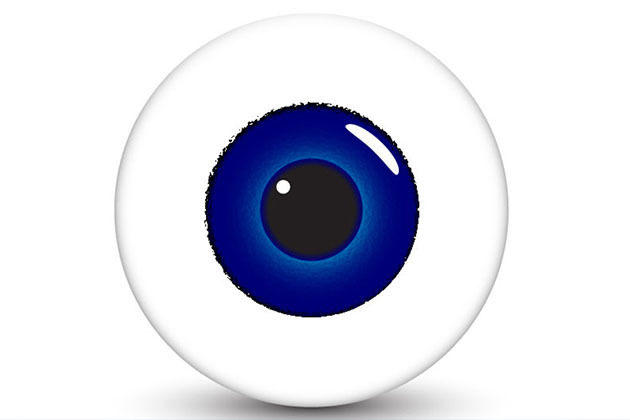Scientists have for the very first time bioengineered a human cornea using 3D printing technique which can be a boost for corneal transplants.
Cornea is the transparent dome-shaped outermost layer of the eye. The cornea is the first lens through which light passes before hitting the retina at the back of the eye. Cornea plays a very important role in focusing vision by transmitting refracting light. It also provides protection to our eye and any damage or injury can cause severe impairment of vision and even blindness. According to WHO, around 10 million people worldwide require surgery to prevent corneal blindness which is caused as a result of a disease like trachoma or some eye disorder. Five million people suffer from total blindness caused by scarring of the cornea due to burns, abrasion or some other condition. The only treatment for a damaged cornea is to receive a cornea transplant, however, demand exceeds supply in corneal transplants. Also, there are many risks/complications associated with corneal transplants including eye infection, use of stitches etc. The most significant and serious problem is that sometimes the donor tissue (of cornea) is rejected after the transplant has been performed. This is a precarious situation and though rare it does happen in 5 to 30 percent of patients.
First 3D printed human cornea
In a study published in Experimental Eye Research, scientists at Newcastle University, UK have for the time used the three-dimensional (3D) printing technique to produce or ‘manufacture’ cornea for the human eye and this could a boon for getting corneas for transplant. Using the well-established 3D bioprinting technology, researchers used stem cells (of human cornea) from a healthy donor cornea and they mixed them with alginate and collagen to create a solution that could be printed. This solution called the bio-ink is the most important requirement for printing anything in 3D. Bioprinting is an extension of traditional 3D printing but applied to biological living materials and that is why a bio-ink needs to be used instead which is comprised of “living cell structures”. Their unique gel – comprising of alginate and collagen- is able to keep stem cells alive and at the same time produce a material which is firm enough to remain in a shape but is still soft to be able to get squeezed out of a 3D printer. Researchers used a simple, inexpensive 3D bio-printer in which bio-ink which they prepared was successfully organized in concentric circles to form the dome-shape of an artificial cornea. The distinctive ‘curved shape’ of the cornea was achieved which makes this study a success. This printing procedure took less than 10 minutes. The stem cells were then seen to be growing.
Ever since the popularity of 3D bioprinting has risen, researchers have been looking to find the best suited ideal bio-ink for feasibly and efficiently making corneas. This group at Newcastle University has taken the lead and achieved it. The same group of researchers have earlier shown that they kept cells alive for several weeks at room temperature within a simple gel of alginate and collagen. With this study they have been able to transfer this usable cornea with cells remaining viable at 83 percent for one week. So, tissues could be printed without the concern whether they will grow or not (i.e. stay alive) since both the things are achievable in the same medium.
Making patient-specific cornea
Researchers have also shown in this study that cornea could be built to match each patient’s unique requirements. First, the patient’s eye is scanned which generates data to match the ‘print cornea’ to the exact shape and size required. Dimensions are taken from the actual cornea itself which then makes printing highly accurate and feasible. 3D printing technology has been tested in producing artificial heart and some other tissues. Flat tissues have been created in the past but according to the authors this is first time ‘shaped’ corneas have been produced. Though this method still requires healthy donor cornea, stem cells are successfully used to grow into more cells in artificial cornea. One healthy cornea will just not ‘replace’ a damaged one but we could grow enough cells from one donated cornea to print 50 artificial corneas. This will be a much more beneficial scenario than just doing a single transplant.
Future
This study is still at a preliminary stage and 3D printed corneas need to be further evaluated. Researchers state that their work will take several years before such an artificial cornea can be used for transplants because animal and human trials are still to be carried out. It also needs to be checked if this material is functional and lots of fine-tuning is needed. Researchers are confident of these artificial corneas to be available for practical use within the next 5 years. Availability of 3D printing technology is not a problem now as its become inexpensive and bioprinting is emerging well and there might be standard procedures available in few years’ time. More focus is now going towards using stem cells to rebuild or replace damaged tissues while the printing aspect of the method is mostly streamlined.
This study is a significant step towards a solution which can give us an unlimited supply of corneas for transplant worldwide. Further, researchers at an Italian company are thinking in the direction of eventually creating ‘3D printed eyes’ which would be constructed in a similar manner by using potential bio-ink that encompasses the obvious cells required to replace those found in a natural set of eyes. The bio-inks could be varied in different combinations depending upon the specific requirement. They are aiming to have these “artificial eyes” in the market by 2027. The study has produced the most advanced form of artificial cornea and has highlighted bioprinting as potential solution to organ and tissue shortages.
***
{You may read the original research paper by clicking the DOI link given below in the list of cited source(s)}
Source(s)
Isaacson A et al. 2018. 3D bioprinting of a corneal stroma equivalent. Experimental Eye Research.
https://doi.org/10.1016/j.exer.2018.05.010






































